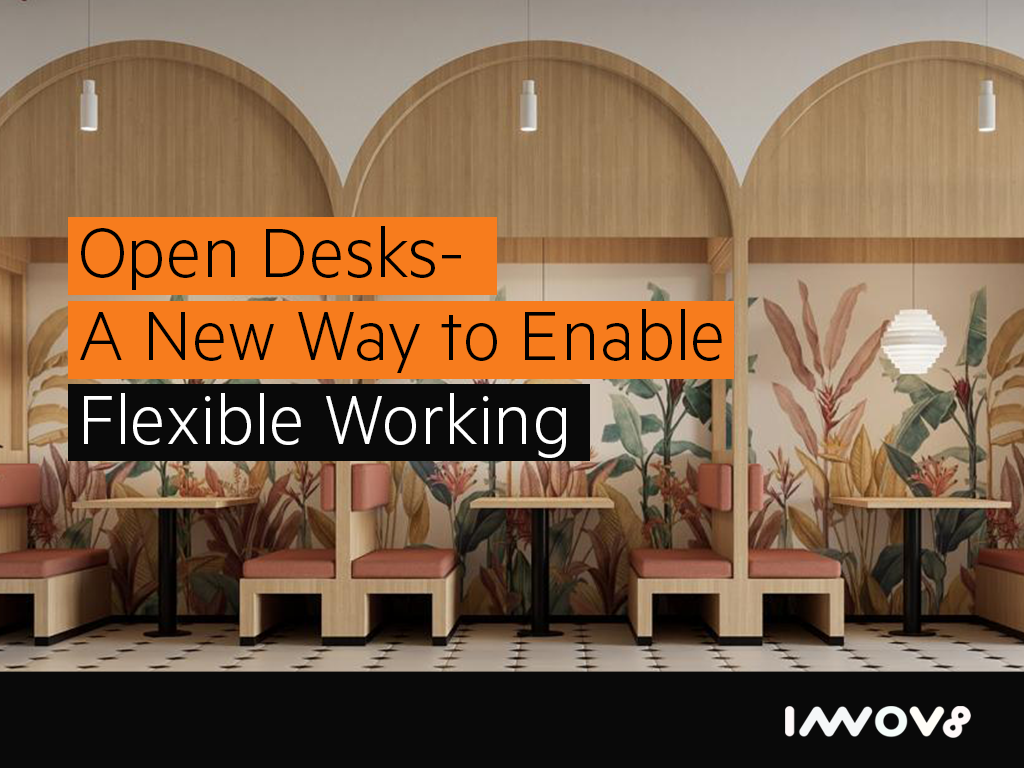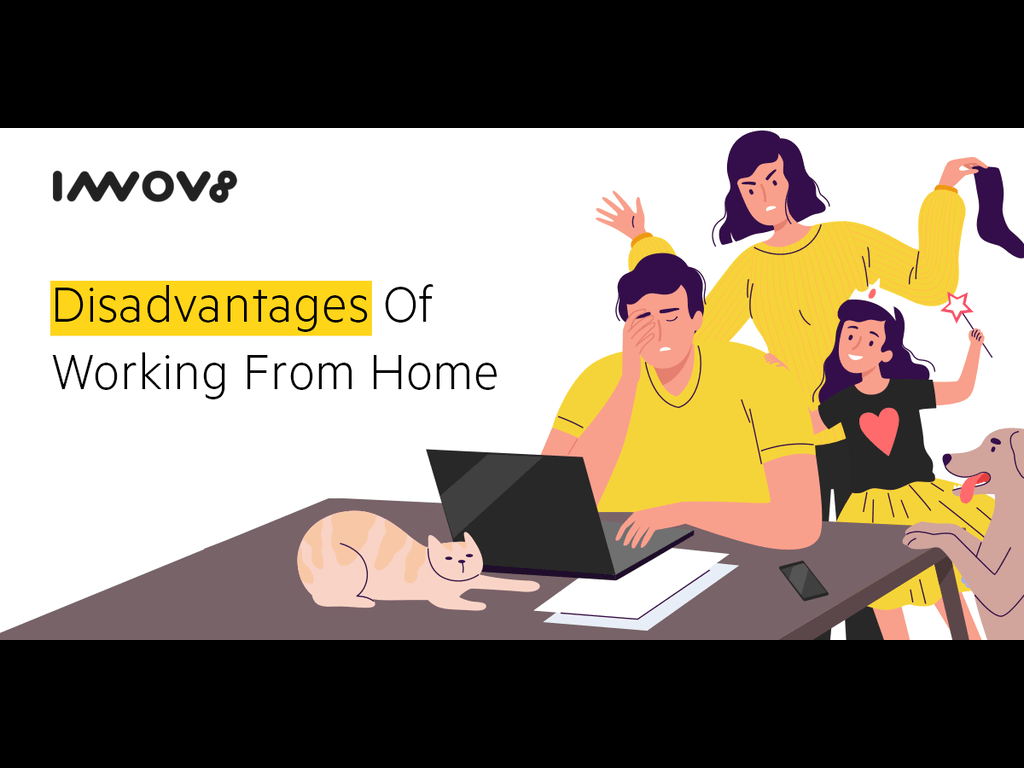For years, offices have been following the traditional setup where everyone remains behind closed doors and assigned desks. However, the constantly evolving working landscape is moving away from rigid cubicle culture and accepting more flexible workspaces. One trend that stands out more than the others is the concept of open desks. This open-office approach breaks the conventional barriers of private offices and aligns with the modern workforce’s need for adaptability, productivity, and enhanced flexibility.
An open desk, also known as a source desk or opendesk, is a non-assigned workspace. This setup is rapidly gaining momentum for its ability to help people come together and foster collaboration. With 72% of companies adopting flexible workspaces (Forbes), open desks have become an important part of the new office culture. When businesses eliminate the concept of assigned cubicles, they automatically optimize space usage, reduce costs, and create a more dynamic work environment.
Although open desks are a strategic approach to increasing employee engagement and satisfaction, they require proper implementation and planning to be truly effective. Let us look at how open desks promote a more fluid and interconnected work culture.
The Rise of Flexible Working
Technology plays a huge role in shifting people’s mindsets and attitudes. With rapid advancements, people’s demands and priorities are changing. More employees are drawn to hybrid working models, driven by the need for a healthier work-life balance and more time for their personal lives. They seek greater autonomy and better mental health.
With virtual communication evolving and businesses maintaining offices worldwide, the workplace can now exist anywhere. Almost everyone has access to a smartphone or laptop, making work a 24/7 possibility. Moreover, the COVID-19 pandemic further accelerated this trend, proving that businesses can function effectively in adaptable conditions.
Open desks are synonymous with employee autonomy and flexible working hours, offering a workspace where employees have the freedom to choose where they work. Who wants to stare at the same old walls, sit behind the same desk, and work long hours when they can work from anywhere? This setup has also helped companies scale office space based on actual demand instead of rigidly assigned seating.
Benefits of Open Desks
There is a reason why open desks are becoming a preferred layout for modern businesses. Here are some of the associated benefits:
-
Flexibility
Open desks reinforce the concept of autonomy by allowing employees to choose their workspace based on their tasks. They can opt for collaborative areas for team discussions or move to quieter zones for focused, independent work. There is no concept of a permanent desk; workspace selection is entirely at the employee’s discretion.
Open desks, also known as source desks, cater to today’s dynamic workforce. Unlike assigned seating, they introduce greater flexibility in work structures. When employees have control over their working environment, they tend to be more productive and satisfied. Moreover, this flexibility helps break the cycle of mundane and monotonous work settings, making workdays more engaging and efficient.
-
Cost Efficiency
Traditional office setups, with cubicles and private offices, require significant space and involve construction, furnishing, and maintenance costs. Open desks and shared workstations eliminate these expenses. Designing a shared workspace with versatile furniture is often more budget-friendly than furnishing multiple private offices. In fact, open work desks for the office eliminate the need for excessive real estate, reducing costs by up to 30% (CBRE).
Without fixed seating arrangements, companies can significantly reduce infrastructure and property costs while maintaining a professional and comfortable environment. These savings can be reinvested into employee-centric initiatives or development programs. Thus, by adopting an open-desk system, businesses not only reduce expenses but also foster a more flexible and financially sustainable workplace.
-
Collaboration and Networking
Open desks are spacious, barrier-free environments that remove physical restrictions, making it easier for employees to connect and collaborate. This setup naturally creates a more dynamic and transparent workspace where communication flows effortlessly. A diverse mix of professionals can come together, exchange ideas, share resources, and engage in meaningful interactions.
Such an arrangement not only strengthens teamwork but also encourages employees from different departments to work together, improving cross-functional communication. This increased exposure to colleagues outside one’s immediate team builds stronger workplace relationships and enhances overall synergy.
Moreover, new hires find it easier to integrate into the company culture, as open communication becomes employees’ second nature. By breaking down walls—both literal and figurative—open desks promote creativity, teamwork, and a true sense of belonging.
Implementation
Open desks can be extremely fruitful if implemented successfully. Transitioning from assigned to non-assigned workspaces requires careful planning to ensure comfort, productivity, and efficiency.
Here are the key steps to implement well-planned and successful open work desks for the office:
-
Create Zones
Different tasks demand different work environments. While teamwork thrives in collaborative spaces where employees can brainstorm and solve problems together, some tasks require deep focus and minimal distractions. By strategically dividing an open desk setup into designated zones, businesses can ensure employees have the right spaces to focus, collaborate, or recharge when needed.
-
Build a Strong IT Framework
High-speed Wi-Fi, cloud-based systems, and support for wireless and portable devices enable employees to transition seamlessly between desks without interruptions.
-
Establish Clear Guidelines
While source desks provide freedom and flexibility, setting clear rules is important to ensure smooth operations and maintain a professional atmosphere. For instance, without clear distinctions between work zones, confusion and inefficiency can arise. Moreover, rules on cleanliness, noise levels, and shared desk usage help create a respectful and professional workspace.
-
Offer Storage Solutions
Unlike traditional offices, where each cubicle serves as a personal space, open desks are shared by everyone. To minimize clutter and enhance organization, businesses can provide personal storage solutions for employees. Personal lockers, mobile storage units, or shared shelves ensure accessibility while maintaining a tidy and convenient workspace.
Challenges and Solutions
-
Distractions and Noise
Since employees do not have permanent private spaces, the open environment can sometimes become noisy, making it easier for them to get distracted by surrounding activities. This distraction can reduce their ability to focus and work efficiently.
Solution: Investing in acoustic design, such as sound-absorbing carpets and panels, can help minimize noise and create a quieter workspace. Additionally, designated quiet zones allow employees to move to areas with fewer distractions. Encouraging the use of noise-canceling headphones can also help individuals maintain focus in a busy environment.
-
Lack of Privacy
Employees work side by side, which means they may struggle with a lack of personal space that a cubicle setting naturally provides.
Solution: Introducing hybrid working spaces, private booths, and breakout rooms can ensure employees have access to areas where they can work independently, attend meetings without disturbance, and focus better on their tasks.
-
Overcrowding
With no assigned desks, employees can sit wherever they wish, which can sometimes lead to overcrowding at employee-favorite spots and a shortage of available workstations.
Solution: Open spaces should be maximized to ensure that desks are not crammed into small areas. Proper spacing between workstations helps maintain comfort and efficiency. Additionally, introducing a digital desk booking system can allow employees to reserve their workspaces in advance to prevent congestion.
Conclusion
With so many benefits and adaptable solutions, embracing the open office trend is a step toward a more collaborative and forward-thinking work environment. When implemented thoughtfully, it seamlessly balances teamwork with individual focus while prioritizing the well-being and autonomy that employees seek. Given the various reasons and options for creating the ideal open office, open desks represent the future of modern workspaces. By embracing this shift, organizations can cultivate a workspace that is not only cost-effective but also dynamic and future-ready- one that evolves with the needs of its workforce.
Looking for flexible workspaces? Discover how Innov8’s open desks can help you work smarter and more efficiently.


